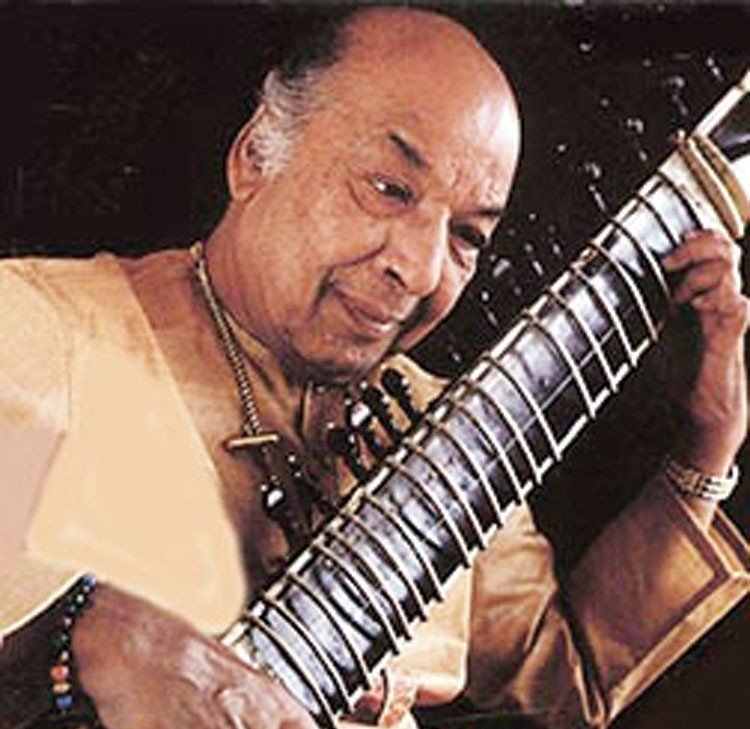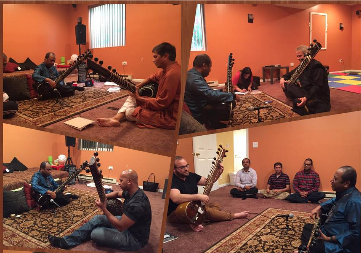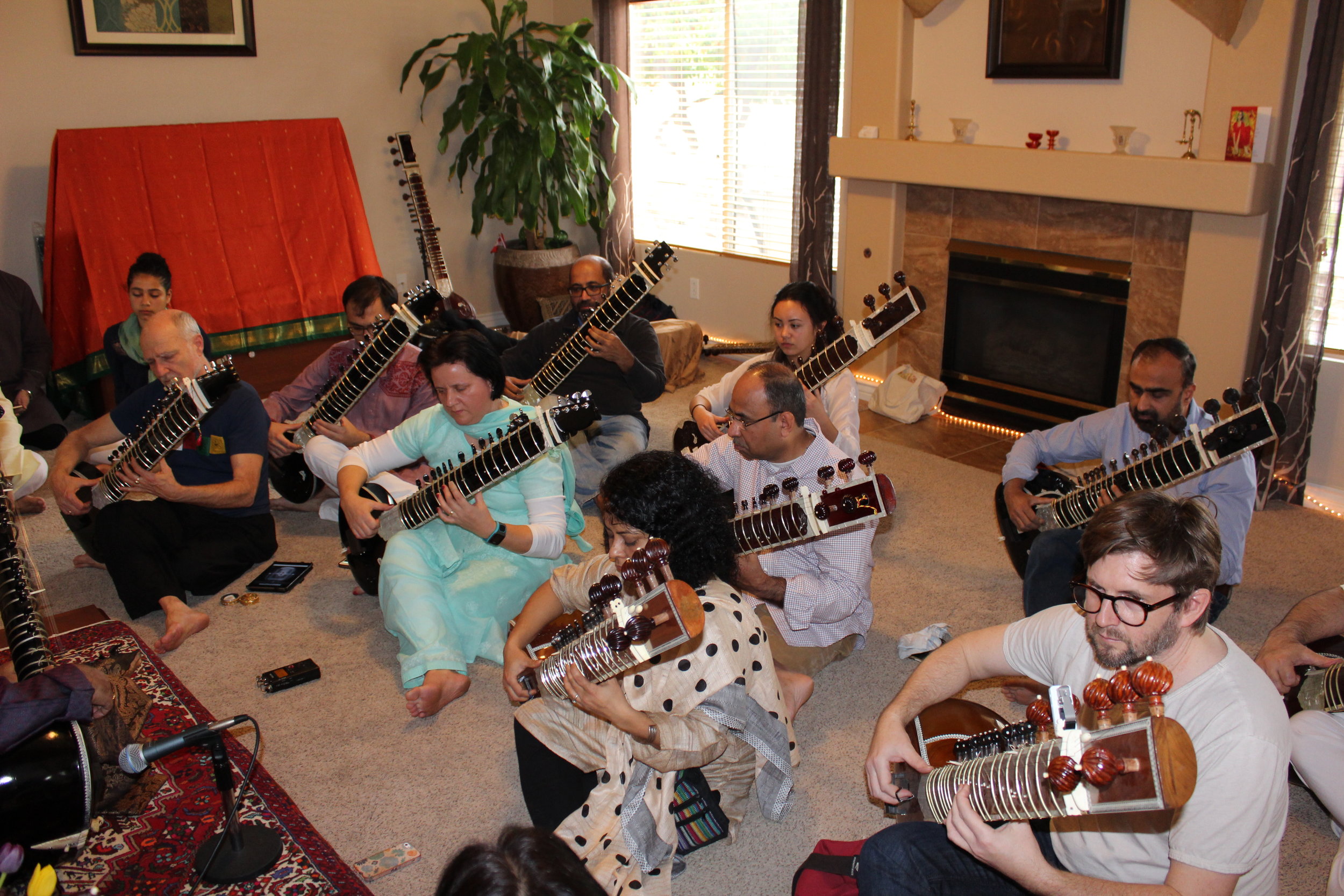By Subranil Sarkar for The SPK Academy of Music
Many listeners often mistakenly believe that only words and sentences (ie. the sahitya) of a composition allow a vocalist to express deeper Rasas like Karuna, Shanta-rasa, Bhakti.
It is true that words sung correctly could highlight the above-mentioned Rasas.
However, that also brings up a very important question - How are instrumentalists able to create the same impact even though their instruments do not use a spoken language to express emotions?
Pandit Kishen Maharaj had beautifully said:
““Jab koi achche Guru se shiksha praapta kartaa hain, to Tabley ko bhi jubaan aa jati hain”. ”
Translation: When a Tabla disciple receives training from a good Guru, even the Tabla speaks.
Proper tālīm and riyāz, truly, have no substitutes.
An instrumentalist has to have complete knowledge of the Raags and Taals that he/she wishes to perform, and master control over his/her instrument. But are these enough to sail through? Are these enough to elevate an instrumentalist to the level of a musician?
Many listeners (who have listened to the masters of yore) often say that the present era has been blessed with many exciting young instrumentalists and vocalists who have beautiful touches and fantastic control over their instrument/vocal cords. Incredible talents each. Yet they also feel that the depth and the subtlety are lacking in their playing/singing. But do only listeners feel so?
Ustad Vilayat Khan, himself, had once said:
““Aaj ka sangeet humein kahan le ja raha hain? Ek woh din ka sangeet tha.. jo hum aankh bandh karte thhe aur kaan se dekhte thhe.. aaj ka sangeet .. hum kaan bandh karte hain aur aankh se sunte hain” ”
Translation: Where is today’s music taking us? There were days when we would close our eyes and watch music through our ears; now we close our ears and listen to music through our eyes.
I have personally heard an anecdote from Pandit Kashinath Mukherjee about Ustad Bade Ghulam Ali Khan. A funny one. But an incredible one too. One day Kashinath ji said –
““Do you know what kind of presence Bade Ghulam Ali Khansahab had? What an aura he had! What an incredible vibration he carried around him! Even those who had no interest in music would fall in love with music, if they came in his presence.””
Then he told me that Khansahab had once caught a teenager (whom Khansahab knew and loved) smoking. Khansahab was in a hurry and said nothing to the kid at that time. Later that day when he met the teenager in his room, there were other people (including the teenager’s father) there. That’s when he started singing in Bhairavi – “... Mat Piyo beta ... Mat piyo” (‘Don’t smoke, son… don’t smoke’ - the word ‘peena’, which means 'drinking’, is synonymous with smoking.)
There were great rasikas in the room. Khansahab’s singing evoked pathos, joy and optimism. Everyone in the room started saying that Bhairavi could not have been more ethereally beautiful than what Khansahab had sung.
Needless to say, there is no such bandish as - “... Mat Piyo beta ... Mat piyo”. And, the sentence, itself, is too ordinary to evoke such strong Rasa in the listeners’ hearts. What happened there that day, many decades ago?
Perhaps the answer could be found in Ustad Bade Ghulam Ali Khan’s own words. Khansahab was enthralling the audience at a mehfil in the Dixon Lane (Kolkata) residence of Pandit Gyan Prakash Ghosh, where knowledgeable rasikas and musicians were in the audience, when suddenly Ustad Bade Ghulam Ali Khan stopped and said –
““ … ‘Nevar baji re’… kabhi bol hain?
Mamuli bol hotein hain.. Gharelu bol hotein hain zindegi ke..
par bandish Ustad ki jo hoti hain, woh kaam deti hain.. wah wah woh deti hain.. “ ”
Are these great lyrics? They are just words from day-to-day conversations. But the melodic ideas used in the composition by the Ustad are what bring in the applause.
It is true that words do fall short to express deeper feelings/ emotions even when the speaker/writer is articulate enough. Perhaps that is why the Sufi Hazrat Inayat Khan had said:
““What science cannot declare, art can suggest; what art suggests silently, poetry speaks aloud; but what poetry fails to explain in words, music can express. ”
“Whoever knows the mystery of vibrations indeed knows all things.””
The mystery of the vibrations is perhaps the most intriguing of all mysteries. But could the solution be found outside? Or does it need one to dive deep within oneself?
““Some time has to be set aside to look within to find the essence of music...When the sadhaka exercises his mind thus, he will find taal in his heartbeat, laya in his pulse, and music in his soul... ”
“His body then becomes the triveni sangam of taal, laya and raag” ”
Bharata Muni has explained in the Natya-Shastra that the bhāva-s (or emotions within) need to be expressed with expertise through actions. And, if done successfully, the expression of bhāva-s inspires within the hearts of the listeners an emotional response or Rasa.
Let me express the same phenomenon analogically. The tarab of a well-tuned instrument starts singing spontaneously on its own when a phrase lands on the intended Shruti precisely on the baaj string. In short, it is a transmission of vibrations - from the baaj string to the tarabs; from the musician to the listeners.
However, both need to be in tune with each other.
““The magic happens only when the artist serves with love and the listener receives with the same spirit.”
The human mind has a huge potential. If a musician delves deeper within oneself, he/she will surely come up with treasures from within. Then the musician could go beyond his/her dependence on words or literature to express deeper emotions like Karuna, Shanta-rasa, Bhakti, and others.
“Indian classical arts are meant to transform the self, as spirituality is woven into its tapestry….Music was and is an easy tool to meditate”
However, if musicians do not go for that inward journey as human beings; would their music express depth or compassion? Could words alone save them?













